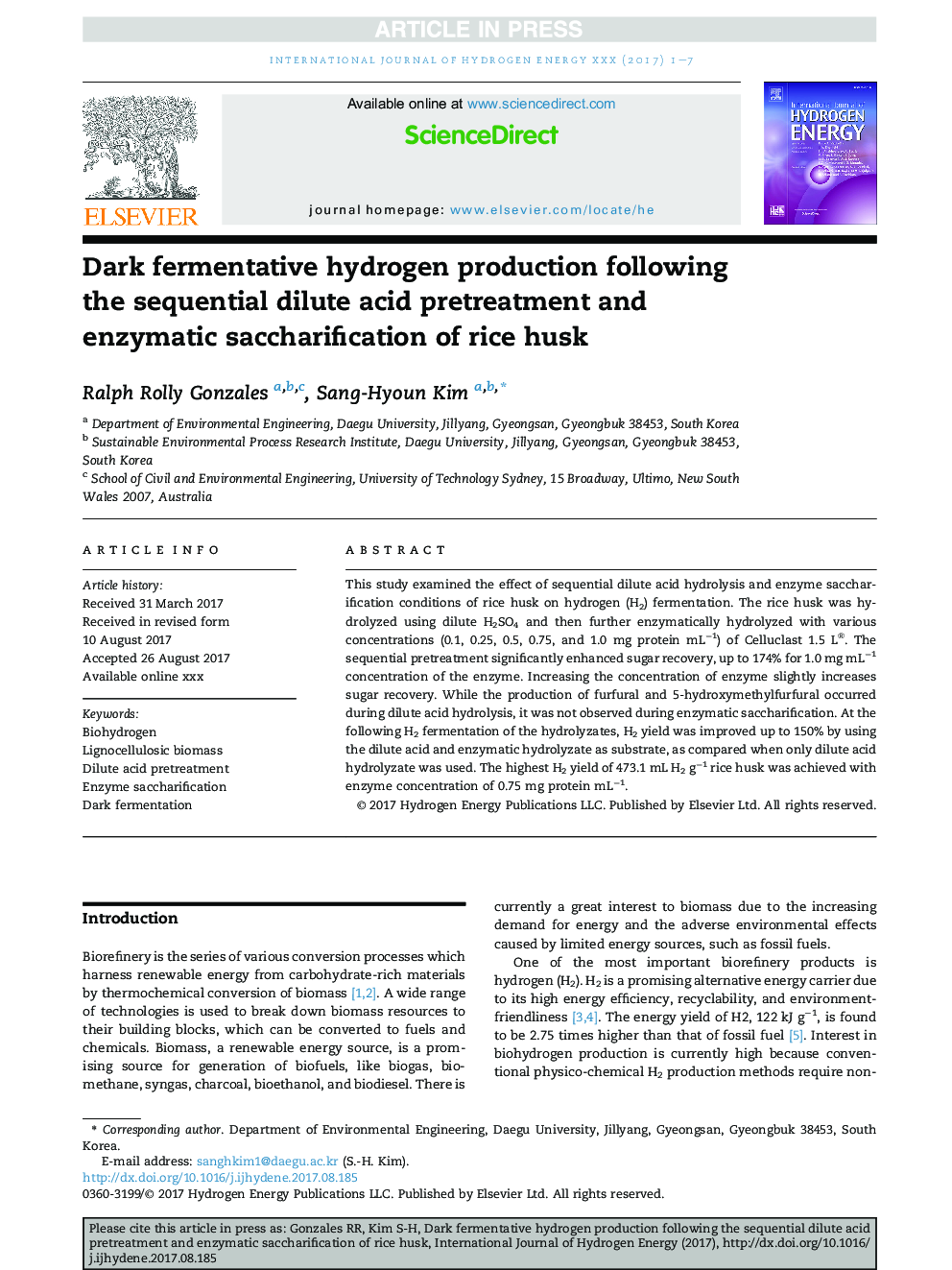| Article ID | Journal | Published Year | Pages | File Type |
|---|---|---|---|---|
| 7709548 | International Journal of Hydrogen Energy | 2017 | 7 Pages |
Abstract
This study examined the effect of sequential dilute acid hydrolysis and enzyme saccharification conditions of rice husk on hydrogen (H2) fermentation. The rice husk was hydrolyzed using dilute H2SO4 and then further enzymatically hydrolyzed with various concentrations (0.1, 0.25, 0.5, 0.75, and 1.0 mg protein mLâ1) of Celluclast 1.5 L®. The sequential pretreatment significantly enhanced sugar recovery, up to 174% for 1.0 mg mLâ1 concentration of the enzyme. Increasing the concentration of enzyme slightly increases sugar recovery. While the production of furfural and 5-hydroxymethylfurfural occurred during dilute acid hydrolysis, it was not observed during enzymatic saccharification. At the following H2 fermentation of the hydrolyzates, H2 yield was improved up to 150% by using the dilute acid and enzymatic hydrolyzate as substrate, as compared when only dilute acid hydrolyzate was used. The highest H2 yield of 473.1 mL H2 gâ1 rice husk was achieved with enzyme concentration of 0.75 mg protein mLâ1.
Keywords
Related Topics
Physical Sciences and Engineering
Chemistry
Electrochemistry
Authors
Ralph Rolly Gonzales, Sang-Hyoun Kim,
